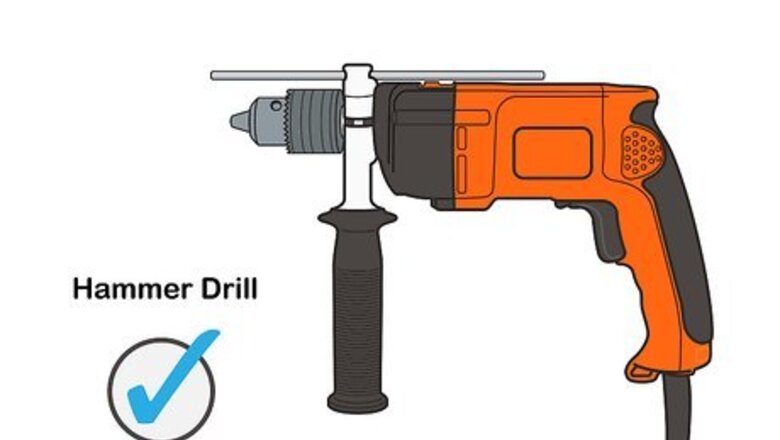
views
Purchasing the Right Equipment
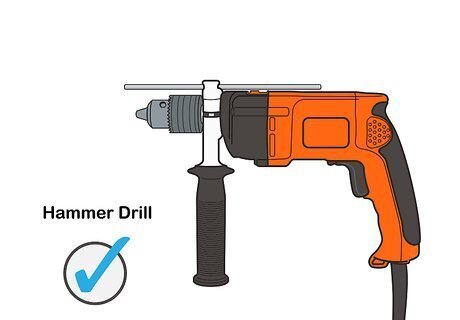
Get a hammer drill. Buy or rent a hammer drill at a hardware store or online. A hammer drill is specially designed to drill into harder surfaces like stone and concrete. Hammer drills have a rotating and pounding motion, which makes it easier to drill into masonry work like concrete. Attempting to penetrate concrete with a regular drill may damage it, unless you go very slowly and use a carbide-tipped masonry bit on a soft stone, like limestone.
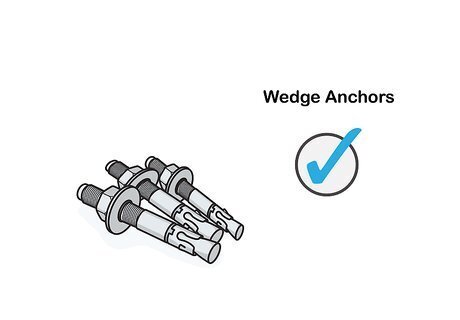
Purchase wedge anchors. You can buy wedge anchors online or at a hardware store. Other anchors can work with concrete and brick but wedge anchors are a good all-around anchor that you can use on light or heavy materials. Purchase anchors that penetrate into the concrete at least one inch (2.54 cm). Look on the box to find the diameter of your wedge anchors so that you can get a drill bit that's the same size. Other anchors include sleeve anchors, strike anchors, hammer drive anchors, drop-in anchors, and machine screw anchors.
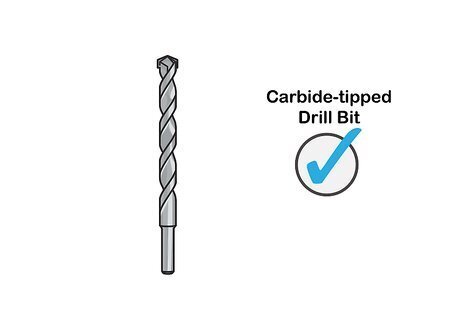
Buy a titanium or carbide-tipped masonry drill bit. A titanium or carbide-tipped drill bit will penetrate through the hard concrete. You can purchase a carbide-tipped drill bit online or at a hardware store. Choose a bit that is a slightly smaller diameter than the anchors that you plan on using.
Drilling into the Concrete
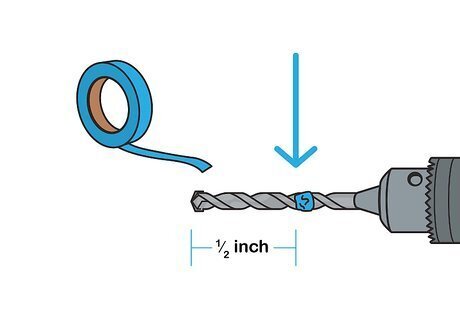
Wrap a piece of tape .5 inches (1.27 cm) from the tip of the drill bit. Use a tape measure or ruler to measure from the tip of the drill bit. Wrap a piece of tape around the bit at this measurement. This will help you know how deep you are drilling.
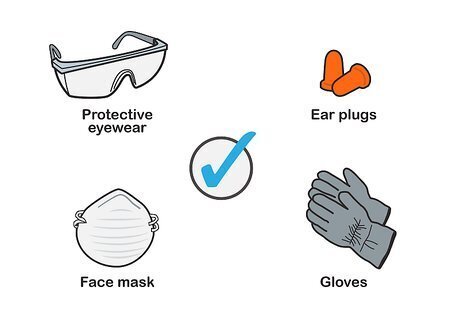
Wear the proper safety gear. Hammer drills are loud and drilling into concrete will send concrete dust and debris into the air. To stay safe, wear a pair of protective glasses, a face mask, gloves, and long pants. You should also insert earplugs.
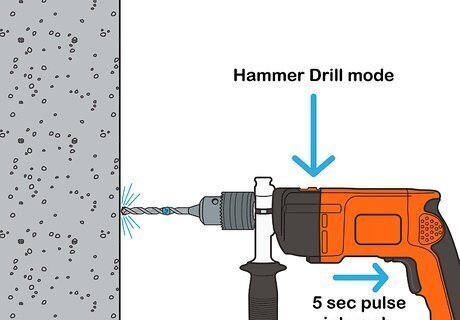
Drill into the concrete. Put your drill into hammer mode by flipping the switch on the side of the tool. Hold the hammer drill perpendicular to the concrete and press the bit against the concrete. Once it's in the correct position, pull the trigger while applying pressure on the back of the drill. Pulse your finger on the trigger at 5-second intervals until you've drilled up to the tape that you wrapped around the bit. Read the instructions if you can't figure out how to put your hammer drill into hammer mode.

Clean the dust out of the hole. Use a compressed air can or a vacuum cleaner to work out debris and dust in the hole. Fasteners will grip better to clean holes, and there will be a lot of concrete dust after you've drilled the hole. You can also move a wire brush in and out of the hole to remove any leftover debris. Use a shop-vac when lifting concrete dust, not a household vacuum cleaner.
Attaching a Fixture with Wedge Anchors
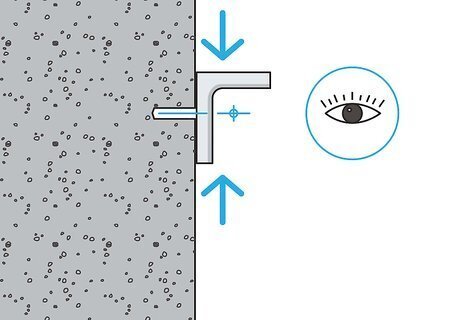
Place the fixture over the concrete and line up the holes. Line up your fixture or whatever you want to attach to the concrete. Line up the hole that you drilled into the concrete with the hole in the fixture. The hole in your fixture must be the same diameter of the anchor that you're bolting into the concrete.
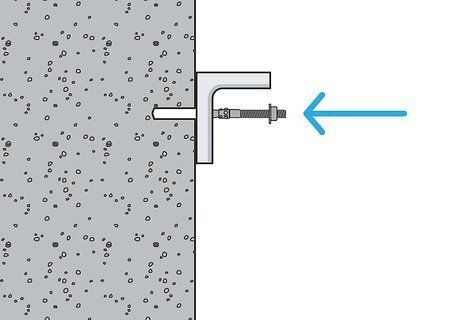
Slide a washer and nut over the threaded end of the anchor. The nut and washer will help protect the anchor and prevent it from getting stripped by being hammered in. Put the nut first, then the washer so that the nut is over the washer but under the pin on the tip of the anchor. Apply Loctite to the bolt to keep it from moving. Alternatively, you could use a locking washer.
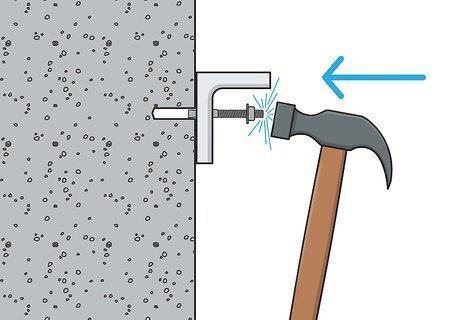
Hammer the anchor into the hole in the concrete. Drop the anchor into the hole in your fixture and hammer the pin on the top of the anchor to drive it into the concrete hole you drilled earlier. It should be a fairly tight fit. Continue to hammer the anchor down until the nut and washer are tight against the fixture.
Tighten the nut with a ratchet. Turn the nut clockwise with your hands to tighten it, then use a ratchet to tighten it until it's firmly attached to your fixture. As you tighten the nut, the anchor should grip to the concrete, holding your fixture in place.

















Comments
0 comment